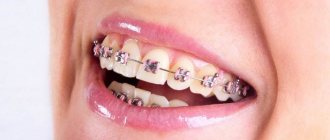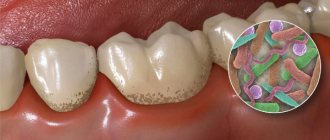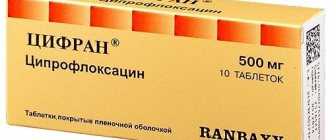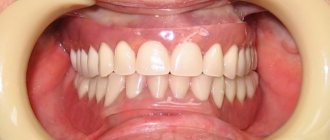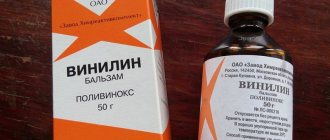Throughout his life, a person often encounters the negative effects of microbes on the body. Bacterial pathogens can settle on the skin, in the gastrointestinal tract, in the genitourinary organs and even on the conjunctiva of the eye. In such a situation, only a strong antibacterial agent will help cope with the infection. Most often, treatment begins with medications based on ciprofloxacin, so doctors often prescribe the antibiotic Tsiprolet to patients. Next we will talk about the beneficial properties of this medication.
Release form
Tsiprolet is produced by many pharmaceutical companies, as it is one of the most popular antibacterial agents. It is produced in the following dosage forms:
- infusion solution - in polyethylene bottles of 100 ml, where the content of ciprofloxacin does not exceed 2 mg per ml;
- tablets - each containing 250 mg or 500 mg of the main active ingredient, they are packaged in blisters of 10 pieces;
- eye drops - sold in bottles with a dropper of 5-10 ml, which contain 3 mg of ciprofloxacin per 1 ml of solution.
According to the instructions for use of Tsiprolet 500, these tablets contain the maximum dose of the active substance. They are used to treat severe bacterial lesions in advanced infections.
Tsipromed or Tsiprolet which is better
Despite the identical active ingredient (ciprofloxacin), Tsipromed and Tsiprolet differ in their scope of application and release form. The first remedy is effective for eye diseases and pathologies of the hearing aid caused by a bacterial provocateur; Available in the form of drops with antibacterial properties. The second is effective for sore throat and tonsillitis of identical origin; it is produced in the form of tablets and liquid for injection.
Tsipromed is an effective prescription for otitis media accompanying bacterial tonsillitis. The use of ciprofloxacin-based ear drops can quickly relieve pain and inflammation of the middle ear cavity.
Like Tsiprolet, the medicine is not prescribed to pregnant women, nursing mothers, or children under 12 years of age. The cost of appointments is in one price category.
Mechanism of action of the drug
Tsiprolet belongs to the group of fluoroquinolones and is an antibacterial drug with a wide range of effects. Its main active ingredient is ciprofloxacin. This chemical compound has the ability to penetrate the DNA structure of the cells that cause the infection, thereby disrupting the vital functions of bacteria, their ability to subsequently reproduce and develop. The result of this influence is the death of harmful microorganisms.
Tsiprolet tablets have a complex effect, effectively destroying microbes that are both at the reproduction stage and in the resting phase. The spectrum of negative effects of this medicine extends to almost all types of gram-positive and gram-negative bacteria, most of the anaerobic pathogens. The instructions for use of Tsiprolet state that its main active component actively eliminates bacterial microflora that are resistant to other antibiotics, for example, the nitrofuran or sulfonamide series. Resistance of microbes to this medicine appears only after a long period of time.
Tsifran or Tsiprolet which is cheaper
Tsifran and Tsiprolet are effective prescriptions against sore throat. In addition to ciprofloxacin, Cifran contains tinidazole; this combination enhances the effect against tonsillitis provocateurs. Prevents division and leads to the death of bacterial microorganisms. A common tablet form (recommended for angina) includes 500 mg of ciprofloxacin, the daily dose for an adult is 1000 mg (there are also 1000 mg tablets available, in which case 1 Cifran tablet is taken per day).
Comparing the prices for both products (Cifran 500 mg and Tsiprolet 500 mg), we come to the conclusion that the cost of the first is 2-3 times higher. However, the final decision on prescribing Tsiprolet, Tsifran or Augmentin depends on the attending physician and the results of preliminary diagnostics.
Indications
Ciprofan tablets - what do they help with? This antibiotic is used for the treatment of complicated or uncomplicated bacterial infections that are caused by strains of microorganisms sensitive to ciprofloxacin. The remedy is indicated for the following diseases:
- urinary tract infections;
- bacterial lesions of the gastrointestinal tract;
- sepsis;
- pathologies of ENT organs, especially in case of infection with staphylococcal microflora and gram-negative bacteria, including the Pseudomonas type;
- peritonitis;
- infectious lesions of the respiratory system (for example, pneumonia), if they are caused by Enterobacter, Staphylococcus, Klebsiella, Haemophilus influenzae, Legionella or microbes of the Branhamella, Pseudomonas species;
- inflammatory infectious diseases of the genital organs in men and women (prostatitis, adnexitis);
- infections of the musculoskeletal system and skin;
- some sexually transmitted diseases (gonorrhea);
- bacterial lesions of the eyelid and conjunctiva of the eyes;
- therapy and prevention of infections in patients with low immunity (for example, with neutropenia or after treatment with immunosuppressive drugs).
Dosage and methods of application
The antibiotic Tsiprolet is prescribed by a doctor after examining the patient. The dose of the drug is selected based on the type of infection, the severity of the disease and the patient’s condition. The dosage regimen is also influenced by the functional ability of the urinary organs and the person’s body weight (when used in adolescence and childhood).
For the most severe cases of infection and when it is impossible to take the medication in tablet form, Tsiprolet is prescribed in the form of infusion solutions. Then the intravenous infusions of the drug are gradually stopped, and the patient switches to internal administration of the medication. The tablets do not need to be chewed; they simply need to be swallowed whole and washed down with a small amount of water. Take Tsiprolet, regardless of food intake, 500-750 mg twice a day.
The duration of therapy depends on the severity of the pathology and can vary from 3 to 21 days. Usually the doctor prescribes the use of this antibiotic for a period of 7 to 14 days.
Tsiprolet 500 mg No. 10 tablet p.o.
Instructions for medical use of the drug Ciprolet® Trade name Ciprolet® International nonproprietary name Ciprofloxacin Dosage form Film-coated tablets, 250 mg, 500 mg Composition One tablet contains the active substance - ciprofloxacin 250 mg or 500 mg, excipients: corn starch, microcrystalline cellulose , croscarmellose sodium, colloidal silicon dioxide, purified talc, magnesium stearate, shell composition: hypromellose, sorbic acid, titanium dioxide, purified talc, macrogol (6000), polysorbate 80, dimethicone. Description White film-coated tablets, round, biconvex and smooth on both sides, height (4.10 ± 0.20) mm and diameter (11.30 ± 0.20) mm (for a dosage of 250 mg) or height (5.50 ± 0.20) mm and diameter (12.60 ± 0.20) mm (for a dosage of 500 mg). Pharmacotherapeutic group Antibacterial drugs for systemic use. Antimicrobial drugs are quinolone derivatives. Fluoroquinolones. Ciprofloxacin. ATC code J01MA02 Pharmacological properties Pharmacokinetics Rapidly absorbed from the gastrointestinal tract. Bioavailability after oral administration is 70%. Food intake has little effect on the absorption of ciprofloxacin. The plasma concentration profile of ciprofloxacin after oral administration is similar to that for intravenous administration, so the oral and intravenous routes of administration can be considered interchangeable. Communication with plasma proteins is 20 - 40%. The average half-life of ciprofloxacin is 6 to 8 hours after a single or multiple dose. Ciprofloxacin penetrates well into organs and tissues: lungs, bronchial mucosa and sputum; organs of the genitourinary system, including the prostate gland; bone tissue, cerebrospinal fluid, polymorphonuclear leukocytes, alveolar macrophages. Excreted primarily in urine and bile. Pharmacodynamics Tsiprolet® is a broad-spectrum antibiotic from the group of fluoroquinolones. Suppresses bacterial DNA gyrase (topoimerases II and IV, responsible for the process of supercoiling of chromosomal DNA around nuclear RNA, which is necessary for reading genetic information), disrupts DNA synthesis, growth and division of bacteria; causes pronounced morphological changes (including cell wall and membranes) and rapid death of the bacterial cell. It acts bacteriostatically on gram-negative microorganisms during the dormant period and bactericidally during the division period (since it affects not only DNA gyrase, but also causes lysis of the cell wall), on gram-positive microorganisms it is bactericidal only during the division period. Low toxicity for the cells of the macroorganism is explained by the absence of DNA gyrase in them. Tsiprolet® is active against most strains of microorganisms in vitro and in vivo: - aerobic gram-positive microorganisms: Corynebacterium diphtheriae, Enterococcus faecalis, Listeria monocytogenes, Staphylococcus spp., including Staphylococcus aureus, epidermidis, Streptococcus pyogenes, agalactiae, pneumoniae, Streptococcus (group C, G), Viridans group streptococci; — aerobic gram-negative microorganisms: Acinetobacter spp., including Acinetobacter anitratus, baumannii, calcoaceticus, Actinobacillus actinomycetemcomitans, Bordetella pertussis, Citrobacter freundii, diversus, Enterobacter spp., including Enterobacter aerogenes, agglomerans, cloacae, sakazakii, Escherichia coli, Gardnerella vaginalis, Ha emophilus ducreyi , influenzae, Haemophilus parainfluenzae, Helicobacter pylori, Klebsiella spp., including Klebsiella oxytoca, pneumoniae, Moraxella catarrhalis, Morganella morganii, Neisseria gonorrhoeae, Neisseria meningitides, including Pasteurella canis, dagmatis, multocida, Proteus mirabilis, vulgaris, Providencia spp., including Pseudom onas aeruginoza, fluorescens, Salmonella spp., Serratia spp., including Serratia marcescens; — anaerobic microorganisms: Bifidobacterium spp., Clostridium perfringens, Fusobacterium spp., Peptostreptococcus, Propionibacterium spp., Veillonella spp.; — intracellular microorganisms: Streptococcus pneumoniae, Enterococcus faecalis, Chlamydia pneumoniae, psittaci, trachomatis, Legionella spp., including Legionella pneumophila, Mycobacterium spp., including Mycobacterium leprae, tuberculosis, Mycoplasma pneumoniae; Rickettsia spp., Ureaplasma urealyticum, Clostridium difficile, Nocardia asteroids, Bacteroides fragilis, Pseudomonas cepatica, Pseudomonas maltophilia, Treponema pallidum are resistant to the drug Ciprolet® Indications for use Uncomplicated and complicated infections caused by microorganisms sensitive to ciprofloxacin: Adults - infections ENT organs ( otitis media, sinusitis, frontal sinusitis, mastoiditis, tonsillitis) - lower respiratory tract infections caused by gram-negative bacteria caused by Klebsiella spp., Enterobacter spp., Proteus spp., Esherichia coli, Pseudomonas spp., Haemophilus spp., Branhamella spp., Legionella spp. ., Staphylococcus spp. (exacerbation of chronic obstructive pulmonary disease, bronchopulmonary infection in cystic fibrosis or bronchiectasis, pneumonia) - urinary tract infections (caused by gonococcus urethritis and cervicitis) - sexually transmitted infections that were caused by Neisseria gonorrhoeae (gonorrhea, chancroid, urogenital chlamydia) - epidymitis-orchitis, including cases caused by Neisseria gonorrhoeae. - inflammation of the pelvic organs in women (pelvic inflammatory disease), including cases caused by Neisseria gonorrhoeae - infections of the abdominal cavity (bacterial infections of the gastrointestinal tract or biliary tract, peritonitis) - infections of the skin, soft tissues - septicemia, bacteremia, infections or prevention of infections in patients immunocompromised patients (eg, patients taking immunosuppressants or those with neuropenia) - prevention and treatment of pulmonary anthrax (Bacillus anthracis infection) - bone and joint infections Children and adolescents - in the treatment of complications caused by Pseudomonas aeruginosa in children over 6 years with cystic fibrosis - complex urinary tract infections and pyeloniphritis - prevention and treatment of pulmonary anthrax (infection with Bacillus anthracis) Method of administration and dosage Tsiprolet® tablets are prescribed to adults orally, before meals or in between meals, without chewing, with a sufficient amount of liquids. When taken on an empty stomach, the active substance is absorbed faster. Ciprofloxacin tablets should not be taken with dairy products (eg milk, yogurt) or fruit juices with added minerals. Doses are determined by the nature and severity of the infection, as well as the sensitivity of the suspected pathogen, the patient's kidney function, and in children and adolescents, the patient's body weight is taken into account. The dose is determined based on the indication, type and severity of infection, sensitivity to ciprofloxacin, treatment depends on the severity of the disease, as well as clinical and bacteriological processes. Treatment of infections caused by certain bacteria (eg, Pseudomonas aeruginosa, Acinetobacter or Stafilococ) requires higher doses of ciprofloxacin and may be combined with one or more other appropriate antibacterial drugs. In the treatment of some infections (for example, pelvic inflammatory disease in women, intra-abdominal infection, infection in neutropenic patients, bone and joint infections), combining one or more compatible antibacterial drugs is possible, depending on the pathogenic microorganisms that cause them. The drug is recommended to be prescribed in the following doses: Adults Indications Daily dose mg Duration of entire treatment (including the possibility of initial parenteral treatment with ciprofloxacin) Lower respiratory tract infections From 2 x 500 mg to 2 x 750 mg. From 7 to 14 days Upper respiratory tract infections Exacerbation of chronic sinusitis From 2 x 500 mg to 2 x 750 mg From 7 to 14 days Chronic suppurative otitis media From 2 x 500 mg to 2 x 750 mg From 7 to 14 days Malignant external otitis 2 x 750 mg From 28 days to 3 months Urinary tract infections Uncomplicated cystitis From 2 x 500 mg to 2 x 750 mg 3 days for women during menopause - once 500 mg Complicated cystitis, uncomplicated pyelonephritis 2 x 500 mg 7 days Complicated pyelonephritis From 2 x 500 mg to 2 x 750 mg Not less 10 days in some cases (for example, with abscesses) - up to 21 days Prostatitis From 2 x 500 mg to 2 x 750 mg 2-4 weeks (acute), 4-6 weeks (chronic) Infections of the genital organs Fungal urethritis and cervicitis 500 mg once a single dose 500 mg Orchiepididymitis and pelvic inflammatory disease From 2 x 500 mg to 2 x 750 mg for at least 14 days Gastrointestinal infections and intra-abdominal infections Diarrhea caused by bacterial infection, including Shigella spp, except Shigella dysenteriae type I and empirical treatment of severe traveler's diarrhea 2 x 500 mg 1 day of diarrhea, caused by shigella dysenteriae type I 2 x 500mg 5 days of diarrhea, caused by Vibrio Cholera 2 x 500 mg 3 days of abdominal typhoid 2 x 500mg 7 days intraabdominal infections caused by gram -negative microorganisms from 2 x 500 mg to 2 x 750mg from 5 to 5 to 5 to 5 to 5 to 5 to 5 to 5 to 5 to 5 to 5 to 5 14 days Skin and soft tissue infections 2 x 500mg to 2 x 750mg 7 to 14 days Joint and bone infections 2 x 500mg to 2 x 750mg max. 3 months Prevention and treatment of infections in patients with neutropenia: recommended in combination with other drugs From 2x500 mg to 2x750 mg therapy continues until the end of the period of neutropenia Prevention of invasive infections caused by Neisseria meningitides 1x500 mg once Post-exposure prophylaxis and treatment of anthrax: treatment should begin as soon as possible after suspected or confirmed infection From 2x500 mg 60 days from the date of confirmation of infection The maximum single dose is 750 mg. Maximum daily dose - 1500 mg Children and adolescents Indications Daily dose mg Duration of entire treatment (including the possibility of initial parenteral treatment with ciprofloxacin) Cystic fibrosis 20 mg/kg body weight 2 times up to 750 mg per day. From 10 to 14 days Complicated cystitis, uncomplicated pyelonephritis From 10 mg/kg body weight 2 times to 20 mg/kg 2 times and a maximum of 750 mg per day. 10 to 14 days Post-exposure prophylaxis and definitive treatment of pulmonary anthrax in individuals who can be treated orally if clinically necessary. The use of the drug should be started as soon as possible after suspected or confirmed contact. 10 mg/kg body weight 2 times a day up to 15 mg/kg body weight with a maximum dose of 750 mg per day. 60 days from the date of confirmed contact with Bacillus anthracis Other severe infections 20 mg/kg body weight 2 times a day with a maximum dose of 750 mg per day. According to the type of infection, the maximum daily dose for children over 6 years of age and adolescents is 750 mg. Elderly Patients Elderly patients should receive a dose selected according to the severity of the infection and creatinine clearance. Renal and liver failure Recommended initial and maintenance doses for patients with impaired renal function Creatinine clearance, ml/min/1.73 m2 Plasma creatinine, µmol/l Oral dose >60 <124 See usual dosage 30-60 124-168 250 –500 mg every 12 hours <30 >169 250–500 mg every 24 hours Patients on hemodialysis >169 250–500 mg every 24 hours (post-dialysis) Patients on peritoneal dialysis >169 250–500 mg every 24 hours In patients with hepatic deficiency there is no need to change the dosage of ciprofloxacin. Studies regarding dosing of the drug for children with impaired renal and/or hepatic function have not been conducted. If the severity of the patient's illness or other reasons (for example, if the patient is receiving enteral nutrition) do not allow the use of ciprofloxacin film-coated tablets, it is recommended to switch to therapy with an IV dosage form of ciprofloxacin. After IV administration, you can continue treatment with the tablet form of the drug. Side effects - increased fatigue, sweating, fever - headache, dizziness, migraine, anxiety, tremor, drowsiness, nightmare dreams, confusion, depression, hallucinations, psychotic reactions - visual and hearing impairment, smell, tactile sensitivity, taste disturbance sensations, including their loss (recovery occurs within a few weeks after stopping treatment) - prolongation of the QT interval, tachycardia, drop in blood pressure, fainting - loss of appetite, nausea, feeling of fullness in the stomach, mild abdominal pain, flatulence, diarrhea - itching, urticaria, erythema multimorpha, allergic pneumonitis, Steven-Johnson syndrome, Lyell's syndrome or toxic epidermal necrolysis, Quincke's edema, photosensitivity - joint and muscle pain, muscle weakness, tendon lesions (including tenosynovitis), muscle lesions (rhabdomyolysis) - cholestasis, liver failure , increased activity of liver enzymes, increased levels of bilirubin, creatinine in the blood serum - neutropenia, agranulocytosis, thrombocytopenia, eosinophilia, leukopenia, hemolytic anemia Contraindications - hypersensitivity to ciprofloxacin, other drugs of the fluoroquinolone group or to any of the excipients of the drug - epilepsy - tendon damage after history of antibiotic treatment - deficiency of glucose-6-phosphate dehydrogenase - pseudomembranous colitis - simultaneous use of ciprofloxacin and tizanidine - pregnancy and lactation - childhood and adolescence up to 6 years of age Drug interactions With the simultaneous use of ciprofloxacin with didanosine, the absorption of ciprofloxacin is reduced due to the formation of complexes of ciprofloxacin with aluminum and magnesium salts contained in didanosine. When used simultaneously with warfarin, the risk of bleeding increases. Concomitant use of ciprofloxacin and theophylline may lead to increased plasma theophylline concentrations due to competitive inhibition at the citrochrome P450 binding sites, resulting in an increase in the elimination half-life of theophylline and an increased risk of theophylline-related toxicity. Simultaneous use of antacids, as well as drugs containing aluminum, zinc, iron or magnesium ions, can cause a decrease in the absorption of ciprofloxacin, therefore the interval between the administration of these drugs should be at least 4 hours. Special instructions Treatment can only be prescribed by doctors experienced in the treatment of cystic fibrosis . Ciprofloxacin may be used to treat severe infection in children and adolescents when needed. In elderly patients, the drug should be used with caution. During treatment, excessive solar and artificial ultraviolet irradiation should be avoided to avoid photosensitivity. If pseudomembranous colitis is suspected, ciprofloxacin should be discontinued immediately and appropriate treatment should be initiated. When using the drug, tendon inflammation and rupture may occur. Such reactions were observed primarily in older patients who were concomitantly using corticosteroids. At the first sign of pain or inflammation, the drug should be discontinued immediately. It should be borne in mind that in patients with a history of brain damage (stroke, severe trauma), seizures may develop; with glucose-6-phosphate dehydrogenase deficiency, there is a risk of hemolysis. In this regard, treatment of such patients with ciprofloxacin should be carried out with great caution. Caution must be exercised when prescribing ciprofloxacin to patients with diabetes mellitus. The use of ciprofloxacin should be discontinued at the first sign of a skin rash or any other allergic reaction. Use in patients with impaired liver and kidney function The drug should be used with caution in patients with impaired renal function, since in such patients the half-life of ciprofloxacin increases. Patients with impaired liver function do not require dose adjustment. The pharmacokinetics of ciprofloxacin in patients with liver cirrhosis did not change. Changes in the pharmacokinetics of the drug in patients with acute hepatitis have not been studied. Features of the effect of the drug on the ability to drive a vehicle or potentially dangerous mechanisms Ciprofloxacin can cause dizziness and increased reaction to light, the ability to concentrate when driving machines and the speed of psychomotor reactions decreases. Overdose Symptoms: confusion, dizziness, disturbances of consciousness, seizures; gastrointestinal disorders, lesions of the mucous membranes; prolongation of the QT interval. Treatment: symptomatic, there is no specific antidote. Tsiprolet® is not excreted by hemodialysis and peritoneal dialysis. Release form and packaging 10 tablets in a blister pack made of polyvinyl chloride film and printed varnished aluminum foil. 1 blister pack along with instructions for use in the state and Russian languages is placed in a box of cardboard. Storage conditions: In a dry place, protected from light, at a temperature not exceeding 25 °C. Keep out of the reach of children! Shelf life: 3 years Do not use after the expiration date indicated on the package. Conditions for dispensing from pharmacies By prescription, INDIA ADDRESS OF THE ORGANIZATION THAT ACCEPTS CLAIMS FROM CONSUMERS ON PRODUCT QUALITY IN THE TERRITORY OF THE REPUBLIC OF KAZAKHSTAN REPRESENTATIVE OFFICE IN THE REPUBLIC OF KAZAKHSTAN: 050057 ALMATY, ST. DZHANDOSOVA, 21 POST BOX 7, TEL: 8(727)3941688, FAX: 8(727)3941294
Adverse reactions and contraindications for use
Tsiprolet very rarely causes allergic reactions. After treatment with this medication, the following side effects most often develop: dyspeptic disorders, nausea and vomiting, skin itching and rash, shortness of breath.
The use of this medicine is contraindicated in the following cases:
- during pregnancy;
- if you are allergic to ciprofloxacin and quinolone drugs;
- in adolescence and childhood;
- during lactation.
Tsiprolet is prescribed with caution to elderly patients. The medication is used only in special cases for people suffering from epilepsy, vascular pathologies, and organic diseases of the brain. Such patients are more likely to experience side effects due to taking the drug, so this antibiotic is indicated for them only in life-threatening situations. In case of allergic reactions and other complaints (for example, joint pain, myalgia), use of the medicine should be discontinued.
Special information
Tsiprolet is not effective against streptococci, so it is not prescribed for the treatment of pathologies caused by bacteria of this group. In case of severe infection by anaerobes and staphylococcal microflora, it is better to take the medication in combination with other antibiotics, which will help enhance the therapeutic effect of ciprofloxacin.
The instructions for Tsiprolet tablets indicate that this drug can have an effect on the patient’s body, changing the ability to concentrate. Therefore, it should not be used by transport drivers and persons servicing complex mechanisms and machines. It is unacceptable to use the medication in combination with alcohol. Tsiprolet is available only with a doctor's prescription.
Tsiprolet or Augmentin - what to choose
Augmentin and Tsiprolet are effective for angina, but they belong to different pharmacological groups. For this reason, co-administration is unacceptable, as well as replacing one medication with another in the treatment protocol without medical permission. When prescribing a potent drug for tonsillitis, the doctor conducts a bacteriological culture to identify the resistance of the pathogen to antibiotics of the penicillin group, macrolides and cephalosporins. If the result is negative (means that the antibiotic is effective), Augmentin is prescribed along with Tsiprolet. When choosing between two medications, consider their positive and negative sides.
The advantages of Tsiprolet include:
- effectiveness against bacterial microorganisms resistant to penicillin antibiotics;
- minimal negative impact on the gastrointestinal tract;
- the use of Tsiprolet does not change the intestinal and vaginal microflora in women, does not cause dysbacteriosis, candidiasis and vaginosis;
- prolonged action of the drug (12 hours between doses);
- course duration is 5-7 days;
- low cost.
Cons of Tsiprolet:
- an extensive list of side effects;
- inadmissibility in the treatment of children under 15 years of age;
- Contraindicated for pregnant and lactating women.
In comparison with Tsiprolet, Augmentin is characterized by the following undeniable advantages:
- the synergy of the components (clavulanic acid and amoxicillin) helps quickly eliminate the provocateur of sore throat;
- the drug is approved for use by children from 3 months;
- with caution, but acceptable in the 2-3 trimester of pregnancy;
- the list of contraindications is much smaller.
The disadvantages of the medicine are:
- negative impact on the microflora of the stomach and genital organs;
- the cost is 2-3 times more expensive;
- Duration of therapy - from 7 days.
Based on the stated characteristics, we draw the following conclusions:
- Augmentin is preferable in the treatment of sore throat in children, older patients, expectant mothers, and patients who have no contraindications to penicillin therapy;
- Tsiprolet is recommended for adults and older patients with gastrointestinal pathologies and intolerance to antibiotics.
